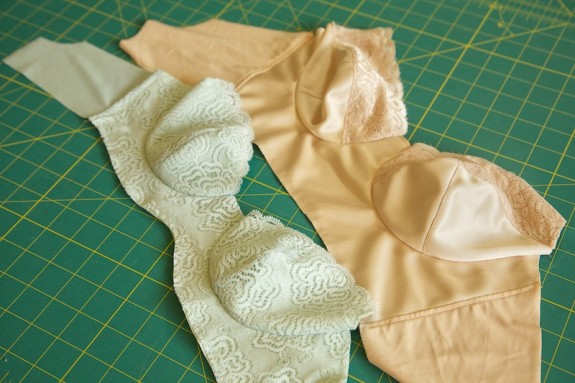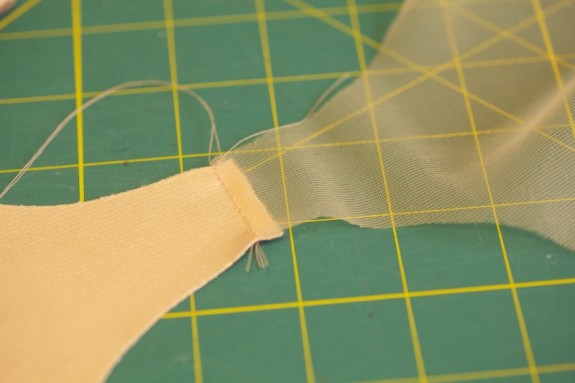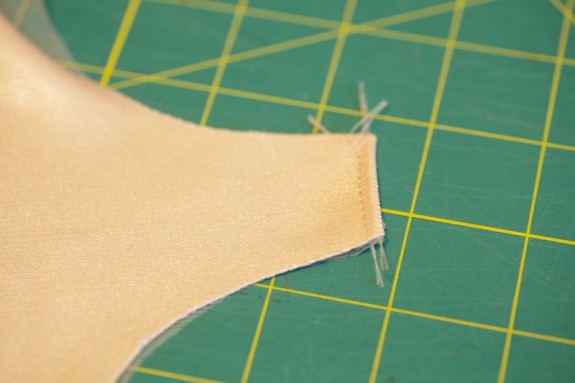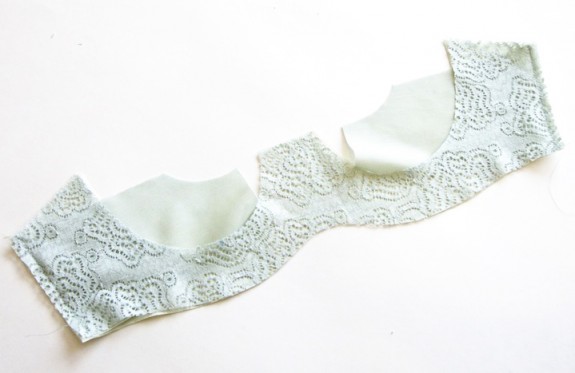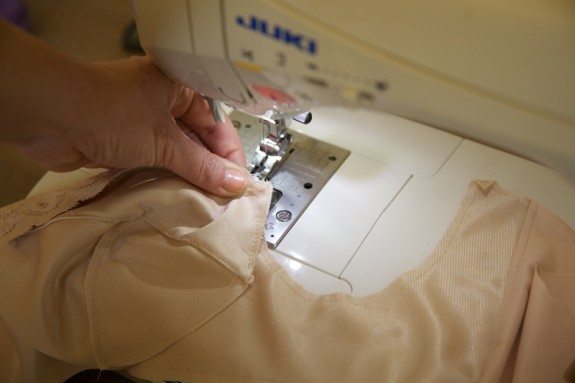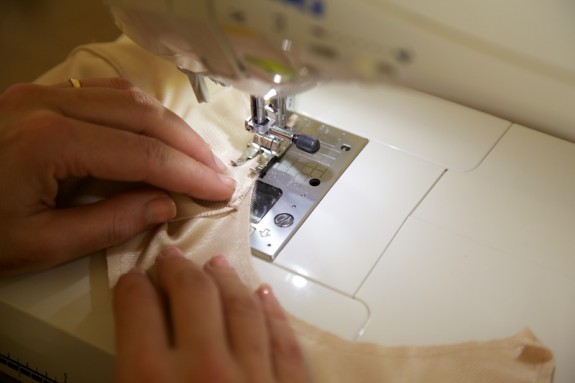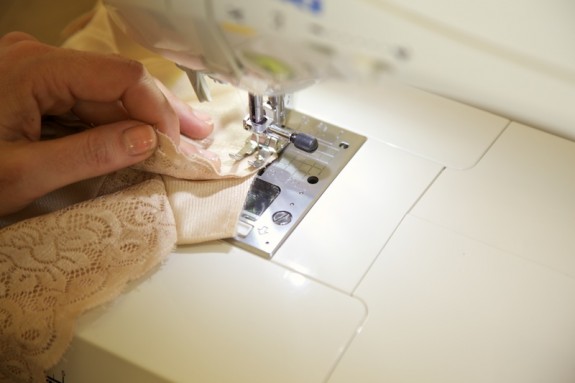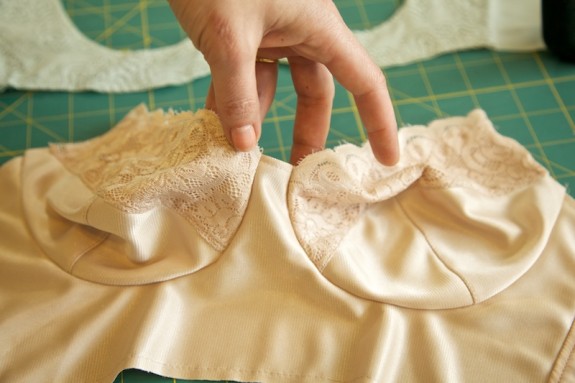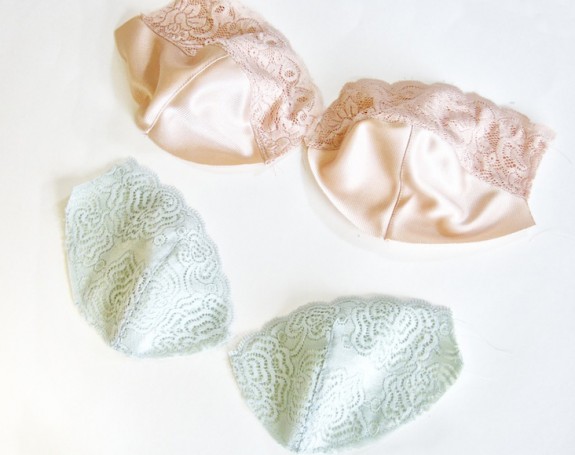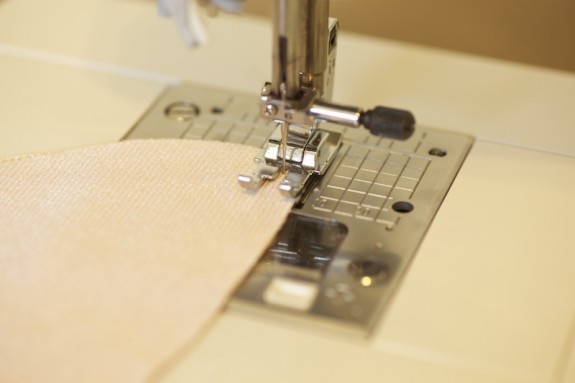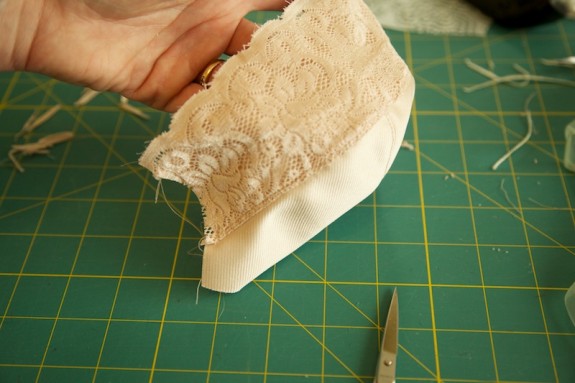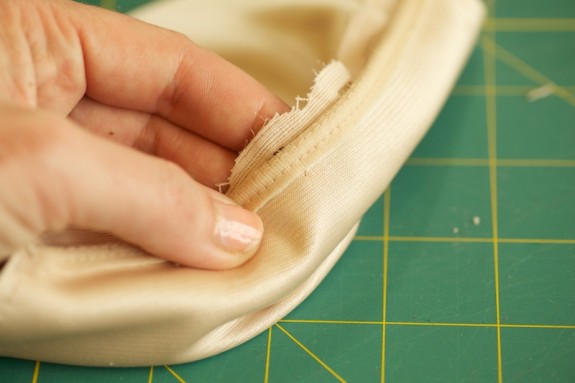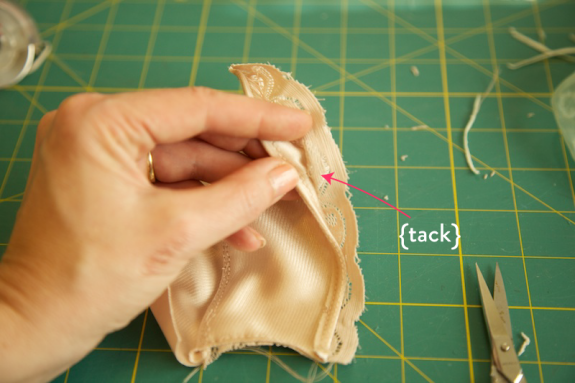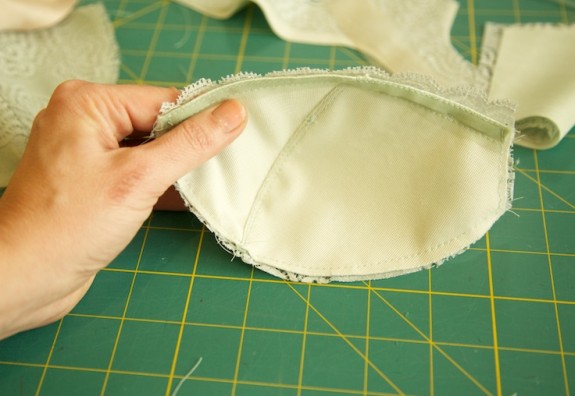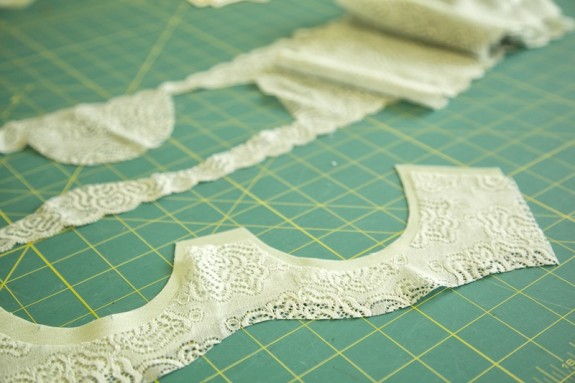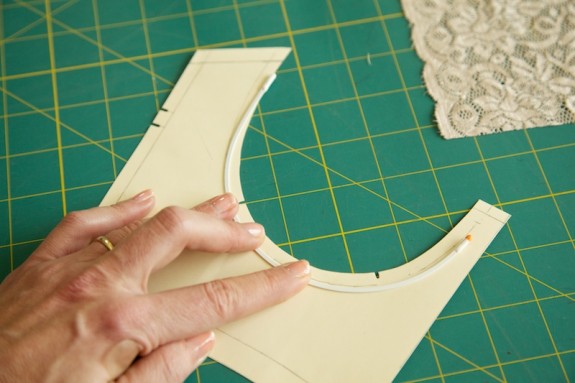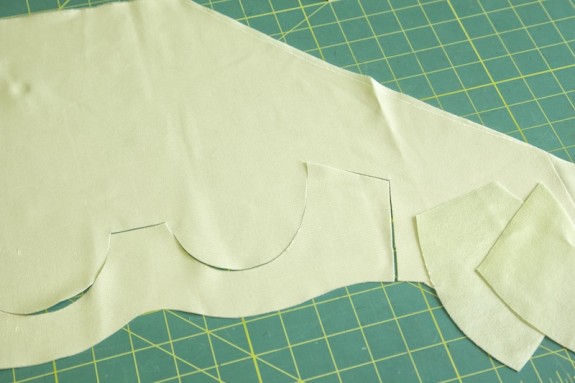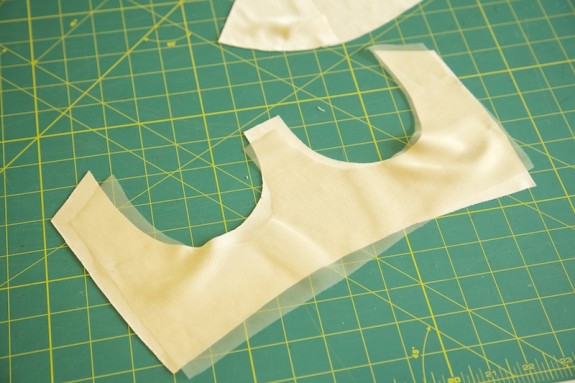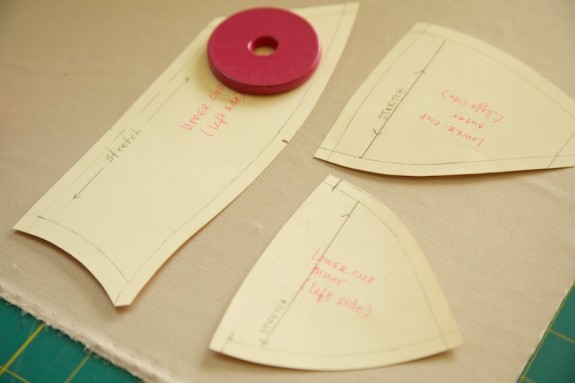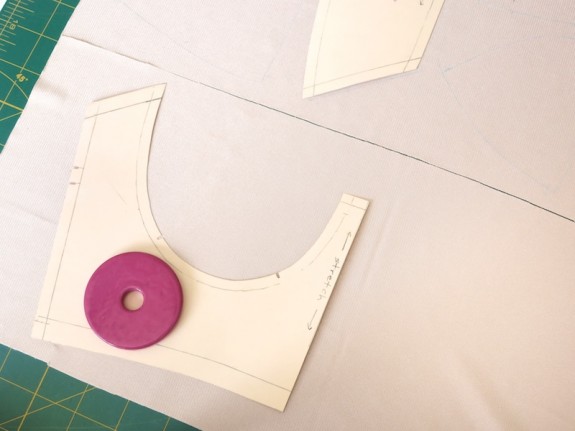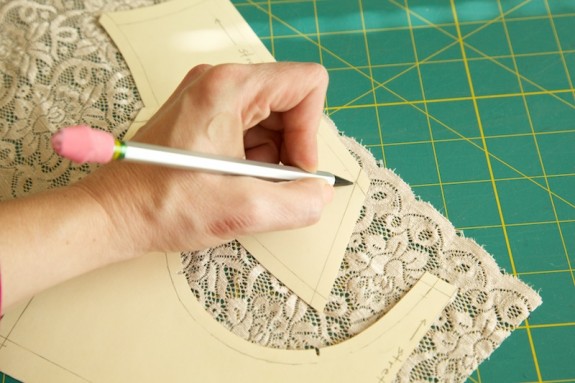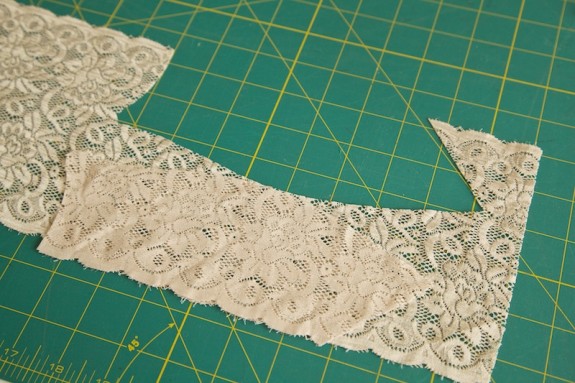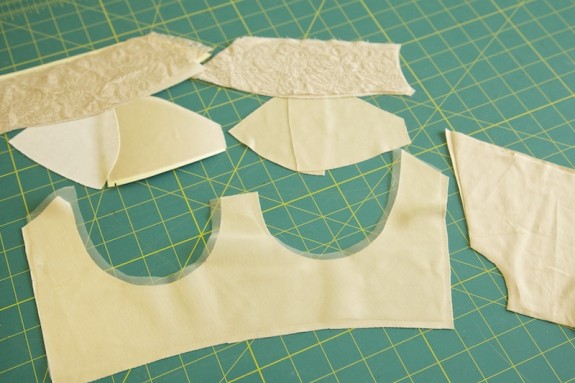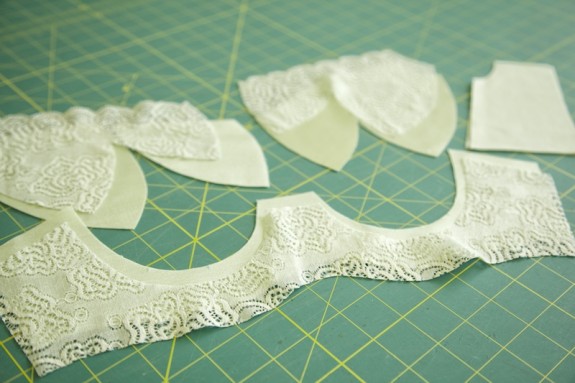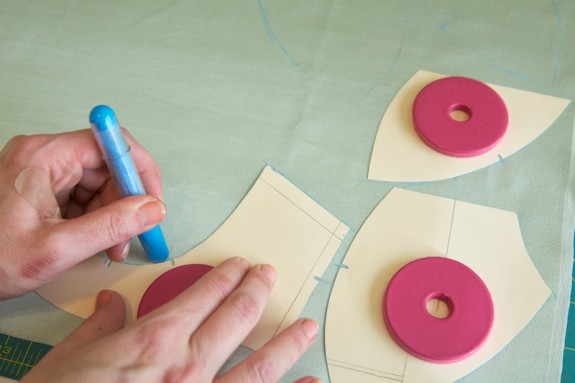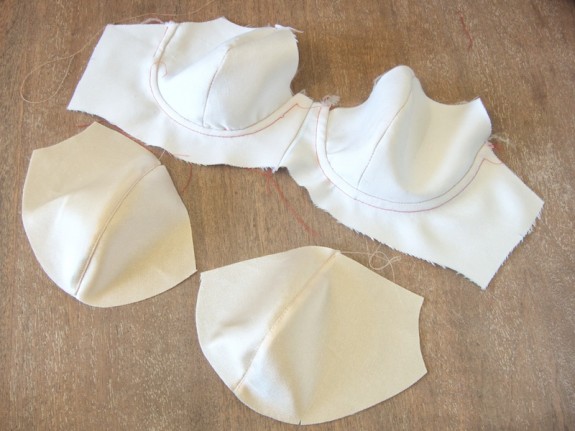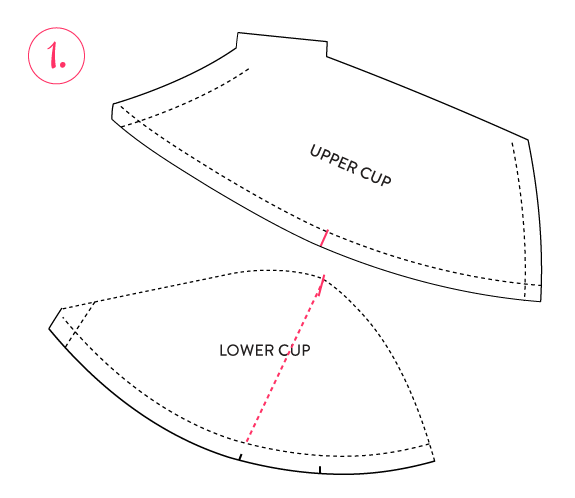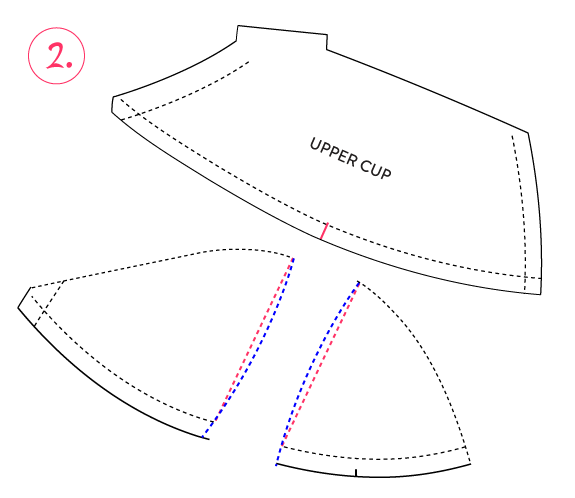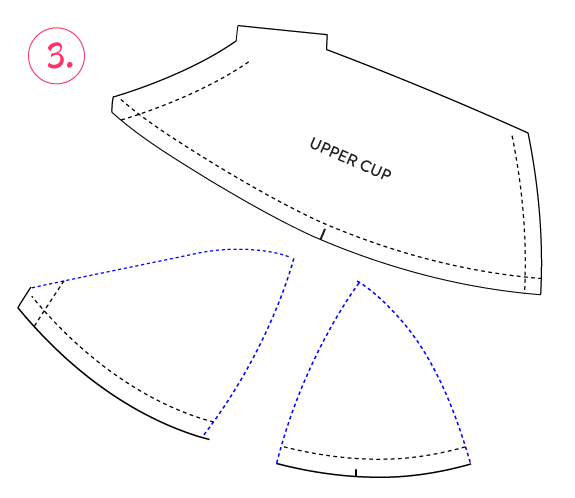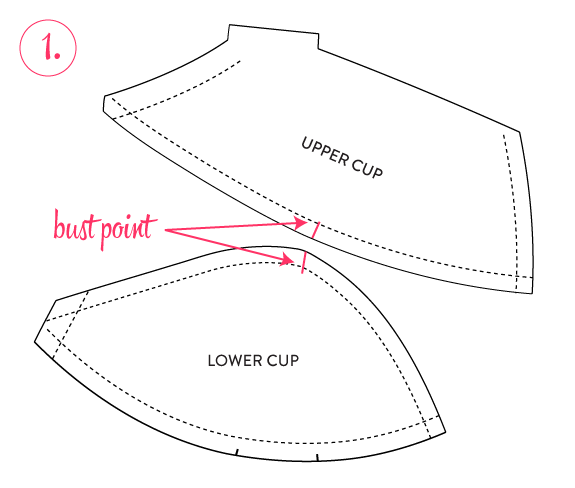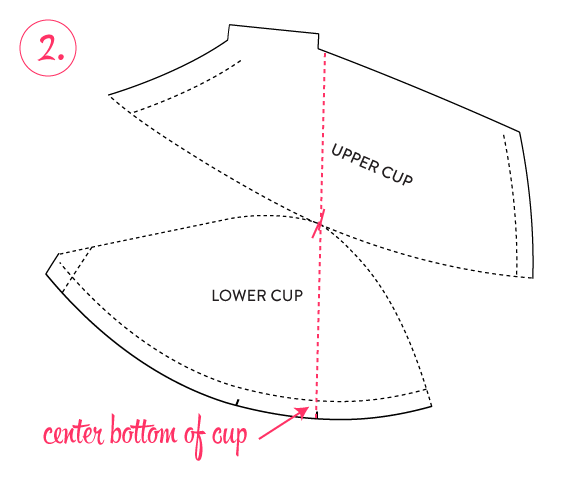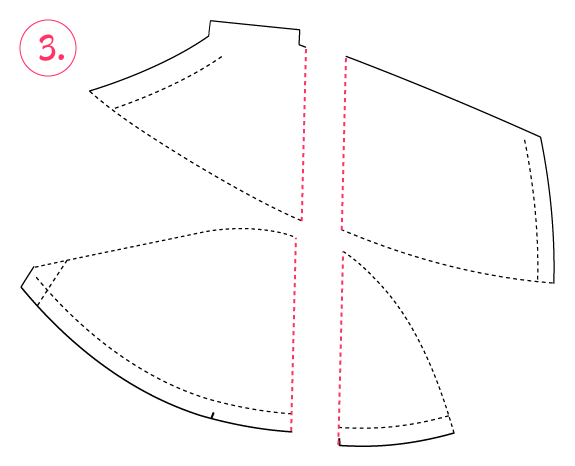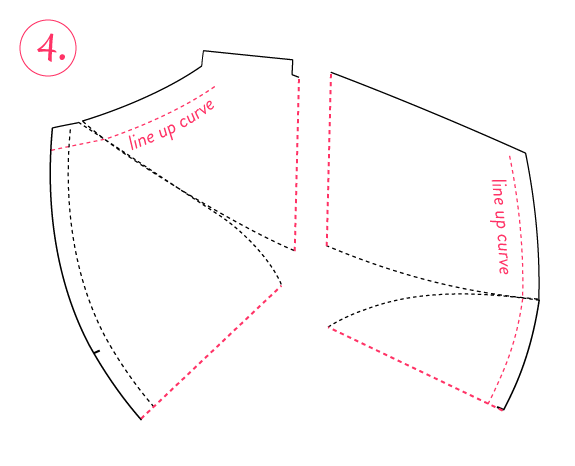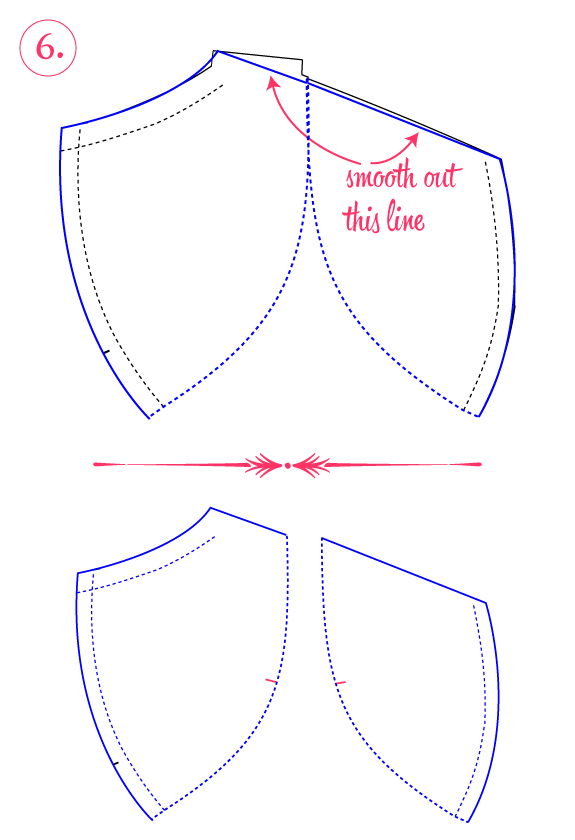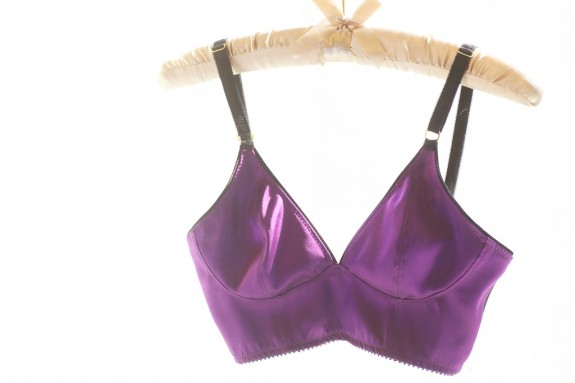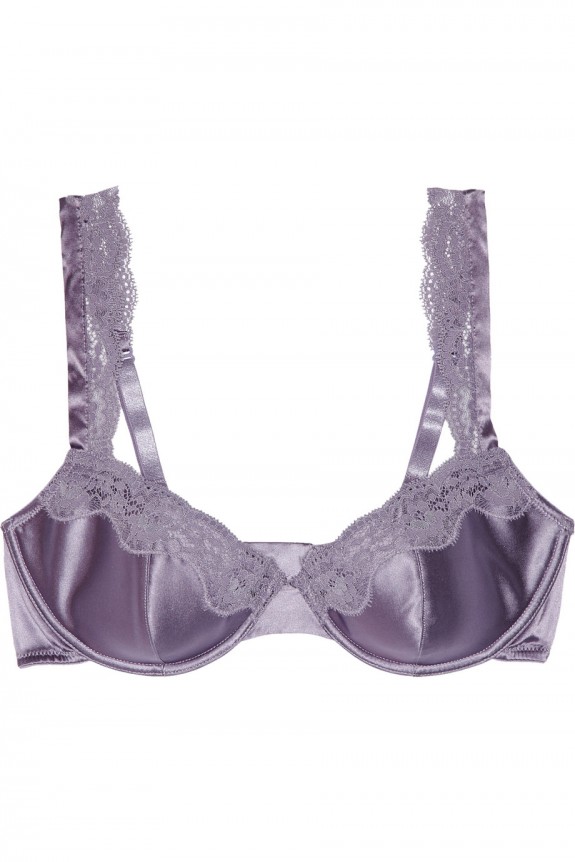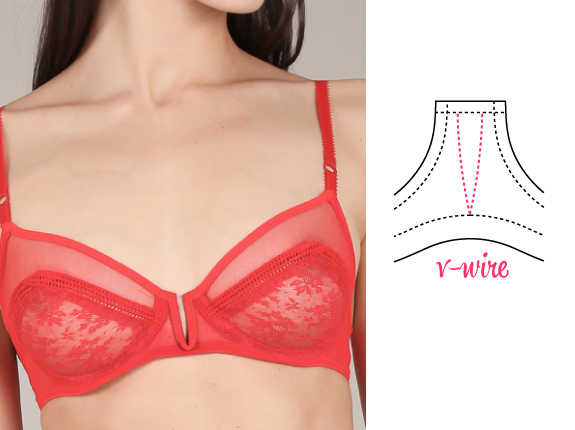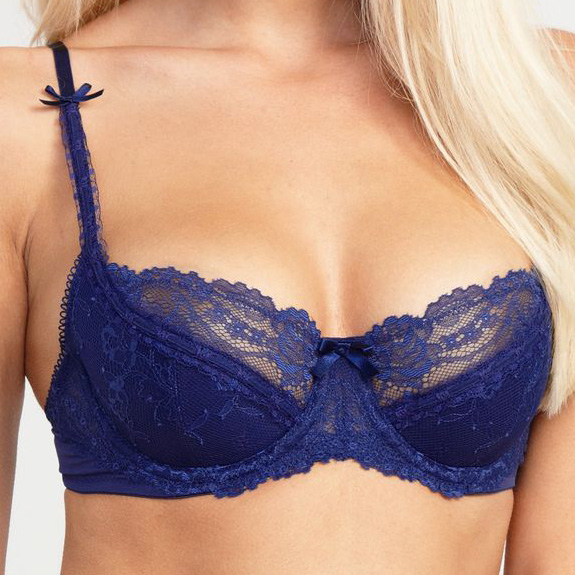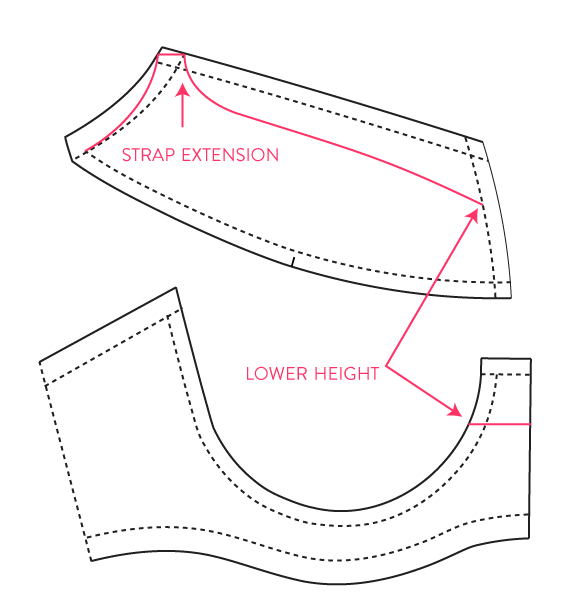Starting to looking like a bra now! Today I’m going to assemble the band and insert the cups.
Since I am lining the cradle of both bras, I used the lining to finish the top of the bridge. With right sides together, I stitched a 1/4″ or 6mm seam across the top. I turned this right side out, pressed and topstitched about 1/8″ away from the top.
If you don’t have a lining and interfaced this part, you can turn down the center top by 1/4″ and topstitch. Another idea: if you’re using fusible interfacing instead of a lining, you could also sew the fusing to the top of the bridge glue side up, turn and fuse for a totally hidden seam.
On my bra, I wanted the band seam to be hidden inside the lining so I sandwiched the band pieces into the cradle and lining and stitched the side seam and top of the bridge at the same time.
Then I turned it all ride side out and basted the layers together so they can be treated as one piece.
On this one I sewed the band in separately…
Now it’s time to sew in the cups. I think this is the trickiest bit by far. Everything else after this is a breeze! But I promise, that with some practice, you’ll be kicking it out!
There are a lot of different techniques for sewing in cups. I like to sew both sides with the cup on top and the cradle on the bottom and–as I mentioned yesterday–I go at it without pins.
I start with the left cup. Remember how I cut with the scallops with the lowest point at the seam? I line up that point right with the seamline on the bridge and start sewing.
The band is facing up and the right side of the cup is facing down. I sew all the way around the cup to the underarm, lining up the notches.
You can also see in the above picture how I keep the two curves opposing each other right up to the edge of the foot.
On the right cup, I start at the underarm.
When I get close to the top of the bridge, I slow down and release the presser foot a few times to rearrange the layers, so that the scallops meet just at the end of the stitching line.
If you’re having trouble with puckering, it helps to release the foot pressure every so often if the layers start to bunch together. Speaking of which, it’s totally normal to end up with a few puckers now and then. Just like sewing sleeve caps. I unpicked one bra like 5 times–ugh… That was actually my impetus to go cold turkey on pins. Since then no more puckers and I stopped cursing my machine. (I know my mom is reading this–I remember you yelling at your machine, too! There was that velvet Christmas dress…)
Happy sewing y’all. I’ll be finishing off the bra tomorrow!

